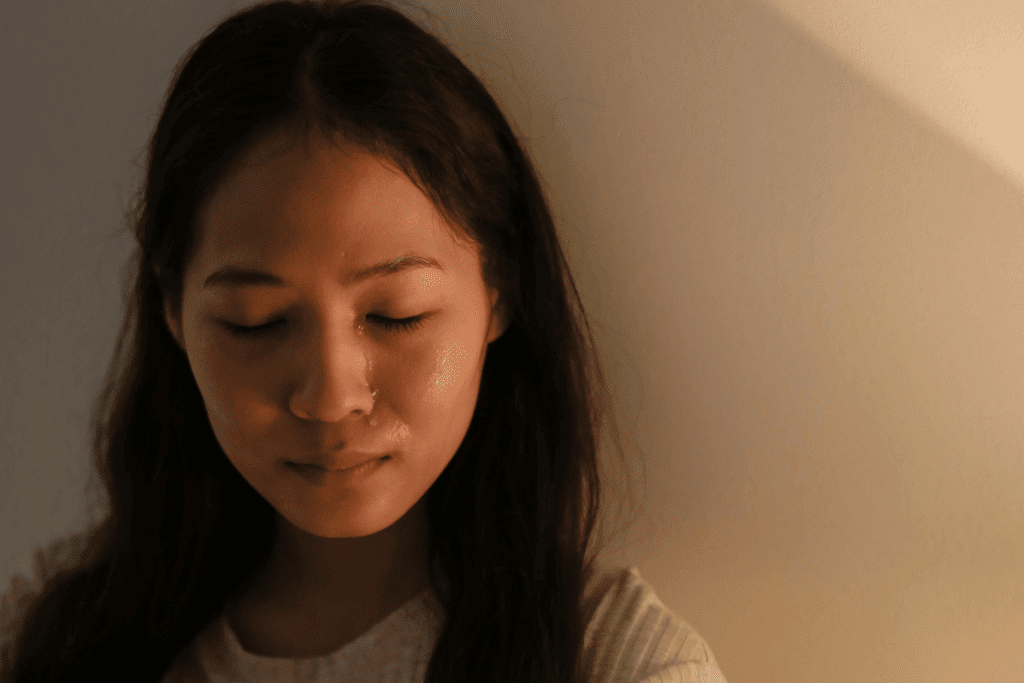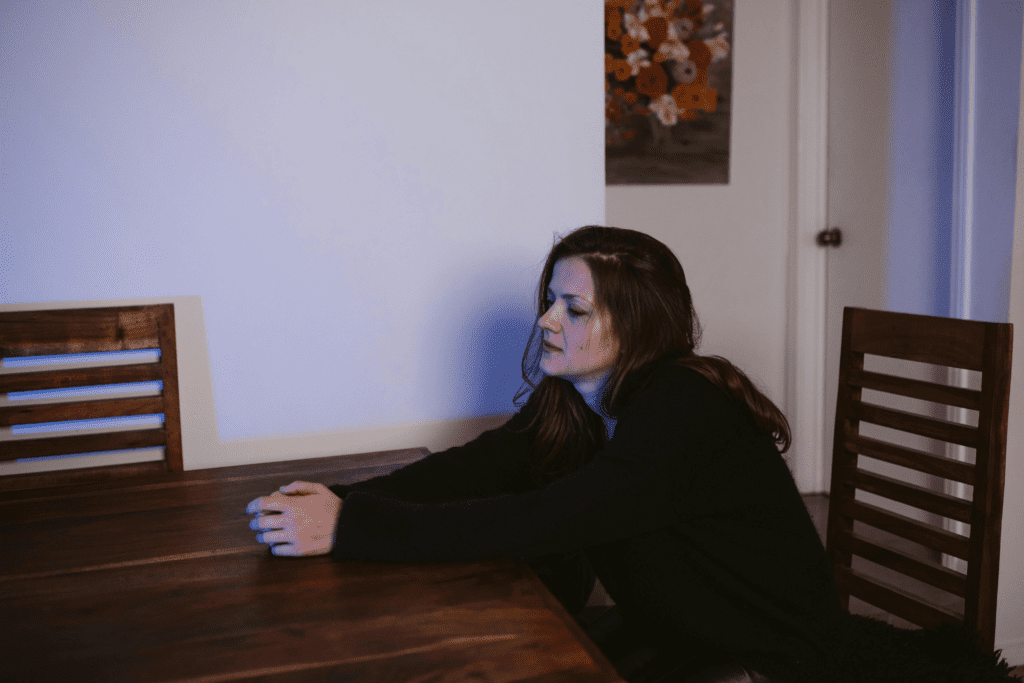Last updated on December 18th, 2024 at 06:35 am
- 1.1 Common Triggers and Symptoms
- 1.2 The Impact of Agoraphobia on Daily Life
- 2. Implementing Cognitive Behavioral Techniques
- 2.1 Cognitive Restructuring
- 2.2 Behavioral Experiments
- 3. Developing a Comprehensive Relaxation Strategy
- 3.1 Progressive Muscle Relaxation
- 3.2 Mindfulness Meditation
- 4. Building a Strong Support Network
- 4.1 Educating Friends and Family
- 4.2 Joining Support Groups
- 5. Exploring Complementary Therapies
- 5.1 Art Therapy
- 5.2 Yoga and Movement Therapies
- 6. Addressing Underlying Trauma and Stress
- 6.1 Trauma-Informed Therapy
- 6.2 Stress Management Techniques
- 7. Leveraging Technology for Recovery
- 7.1 Virtual Reality Exposure Therapy
- 7.2 Mobile Apps for Anxiety Management
- 8. Maintaining Long-Term Recovery
- 8.1 Developing a Relapse Prevention Plan
- 8.2 Embracing Lifestyle Changes
- Identifying and Managing Agoraphobia Triggers
- Gradual Exposure Techniques for Agoraphobia
- Medication Options for Agoraphobia Treatment
- Mindfulness Approaches to Alleviate Agoraphobia
- Relaxation Techniques to Manage Agoraphobia Symptoms
- Support Networks for Agoraphobia Patients
- Pharmacotherapy Options for Agoraphobia
- Lifestyle Enhancements to Overcome Agoraphobia
- Personalized Therapy Approaches for Agoraphobia
- Understanding the Role of Traumatic Events and Genetic Factors
- Adaptive Coping Skills for Agoraphobia
- Recognizing and Managing Agoraphobia Triggers
- Dialectical Behavior Therapy for Agoraphobia
- Understanding the Onset of Agoraphobia and Emotional Symptoms
- Self-Guided Programs for Agoraphobia Management
- Community Support for Agoraphobia Individuals
- Addressing Co-occurring Mental Health Conditions
- The Role of Stressful Life Events in Agoraphobia
- Exploring the Link Between Substance Abuse and Agoraphobia
- Complication of Panic Disorder and Agoraphobia with Panic Disorder
- Breathing Techniques and Deep Breathing for Symptom Relief
- Engaging with Healthcare Professionals for Agoraphobia Care
- Self-Help Guides and Resources for Agoraphobia Treatment
- Frequently Asked Questions
- What Are The Symptoms Of Agoraphobia And How Can They Be Recognized?
- How Can Selective Serotonin Reuptake Inhibitors (SSRIs) Help In Treating Agoraphobia?
- What Are The Risk Factors That Contribute To The Onset Of Agoraphobia?
- How Is Cognitive Behavioral Therapy (CBT) Effective In Treating Agoraphobia?
- Can Deep Breathing Exercises Help Reduce The Symptoms Of Agoraphobia?
- What Role Do Lifestyle Changes Play In Managing Agoraphobia?
- How Can Exposure-Based Therapy Help With Agoraphobia?
- Are There Any Pharmacological Treatments For Agoraphobia?
- What Are Self-Help Strategies For People With Agoraphobia?
- What Are The Common Complications Of Panic Disorder With Agoraphobia?
- How Does A Mental Health Professional Diagnose Agoraphobia?
- Can Social Anxiety Disorder And Agoraphobia Coexist?
- How Can One Differentiate Between Agoraphobia And Panic Disorder?
- Can Mindfulness Meditation Alleviate Symptoms Of Agoraphobia?
- How Do Genetic Factors Influence The Development Of Agoraphobia?
- Can People With Agoraphobia Lead A Fulfilling Life With Treatment?
- What Role Do Support Groups Play In Helping People With Agoraphobia?
- Can Lifestyle Modifications Improve Agoraphobia Symptoms?
Agoraphobia is a multifaceted anxiety disorder characterized by an intense fear of situations or places where escape might be difficult or help unavailable in the event of a panic attack. This condition extends beyond a simple fear of open spaces, encompassing a wide range of scenarios that can trigger anxiety and distress.
Individuals with agoraphobia often experience severe anxiety in crowded areas, public transportation, or even when leaving their homes. The fear stems not from the places themselves, but from the perceived inability to escape or find help if panic symptoms arise.
This can lead to a debilitating cycle of avoidance behaviors, significantly impacting one’s quality of life.
Learn how to overcome Agoraphobia with 5 effective tips to reduce anxiety. Get expert advice to help you manage symptoms, feel more at ease, and reclaim your life.
1.1 Common Triggers and Symptoms
Agoraphobia manifests differently for each person, but common triggers include:
– Crowded spaces like shopping malls or theaters
– Open areas such as parking lots or bridges
– Enclosed spaces like elevators or small rooms
– Public transportation, including buses, trains, or airplanes
– Being alone outside the home
Symptoms of agoraphobia can be both psychological and physical, including:
– Intense fear or panic in trigger situations
– Avoidance of feared places or situations
– Need for a companion when leaving home
– Feeling detached or estranged from others
– Physical symptoms like rapid heartbeat, sweating, or trembling
1.2 The Impact of Agoraphobia on Daily Life
Agoraphobia can severely restrict a person’s ability to engage in normal activities. It may lead to:
– Social isolation and strained relationships
– Difficulty maintaining employment or education
– Dependence on others for basic needs
– Increased risk of depression and other mental health issues
– Reduced overall quality of life and sense of independence
Understanding the far-reaching effects of agoraphobia is crucial for developing effective coping strategies and seeking appropriate treatment.
2. Implementing Cognitive Behavioral Techniques
Cognitive Behavioral Therapy (CBT) is a cornerstone in the treatment of agoraphobia. This therapeutic approach focuses on identifying and changing negative thought patterns and behaviors associated with anxiety. By implementing CBT techniques, individuals can gradually challenge their fears and develop healthier coping mechanisms.
2.1 Cognitive Restructuring
Cognitive restructuring involves identifying and challenging irrational thoughts that contribute to anxiety. For someone with agoraphobia, this might include:
– Recognizing catastrophic thinking (e.g., “If I have a panic attack in public, I’ll die”)
– Questioning the evidence for anxious thoughts
– Developing more balanced, realistic perspectives on feared situations
Practicing cognitive restructuring can help individuals with agoraphobia gain a sense of control over their thoughts and reduce the intensity of their anxiety responses.


2.2 Behavioral Experiments
Behavioral experiments involve gradually testing anxious predictions in real-life situations. This technique helps individuals gather evidence that challenges their fears. For example:
– Visiting a local store for a short period and observing that a panic attack doesn’t occur
– Using public transportation for one stop and recognizing the ability to cope
– Gradually increasing time spent in crowded areas without experiencing catastrophic outcomes
These experiments build confidence and provide concrete evidence against anxious beliefs, facilitating recovery from agoraphobia.
3. Developing a Comprehensive Relaxation Strategy
Relaxation techniques play a crucial role in managing the physical and emotional symptoms of agoraphobia. A well-rounded relaxation strategy can help individuals feel more in control when facing anxiety-provoking situations.
3.1 Progressive Muscle Relaxation
Progressive Muscle Relaxation (PMR) involves systematically tensing and relaxing different muscle groups to reduce overall body tension. This technique can be particularly helpful for individuals with agoraphobia who experience physical tension in anxiety-inducing situations.
Steps for practicing PMR:
1. Find a comfortable position in a quiet space
2. Focus on one muscle group at a time, starting with the feet
3. Tense the muscles for 5-10 seconds, then release and relax for 15-20 seconds
4. Move progressively through all major muscle groups
5. Pay attention to the contrast between tension and relaxation
Regular practice of PMR can lead to improved body awareness and the ability to quickly release tension in stressful situations.


3.2 Mindfulness Meditation
Mindfulness meditation involves focusing on the present moment without judgment. This practice can help individuals with agoraphobia become more aware of their thoughts and feelings without becoming overwhelmed by them.
Key principles of mindfulness for agoraphobia:
– Observing anxiety symptoms without trying to change them
– Accepting thoughts and feelings as temporary experiences
– Focusing on breath or bodily sensations as an anchor
– Cultivating a non-judgmental attitude towards one’s experiences
Regular mindfulness practice can increase emotional resilience and reduce the intensity of anxiety responses over time.
4. Building a Strong Support Network
A robust support network is invaluable for individuals managing agoraphobia. Social connections can provide emotional support, practical assistance, and motivation throughout the recovery process.
4.1 Educating Friends and Family
Helping loved ones understand agoraphobia is crucial for fostering a supportive environment. This education can include:
– Explaining the nature of agoraphobia and its impact on daily life
– Discussing specific triggers and symptoms
– Providing information on how to respond during panic attacks
– Sharing resources on anxiety disorders and treatment options
By educating their support network, individuals with agoraphobia can create a more understanding and empathetic environment.
4.2 Joining Support Groups
Support groups offer a unique opportunity to connect with others who share similar experiences. Benefits of joining a support group for agoraphobia include:
– Reduced feelings of isolation and shame
– Opportunity to share coping strategies and resources
– Inspiration from others’ recovery journeys
– Safe space to practice social interactions
Both in-person and online support groups can be valuable resources for individuals managing agoraphobia.


5. Exploring Complementary Therapies
While traditional psychotherapy and medication are primary treatments for agoraphobia, complementary therapies can provide additional support and coping strategies.
5.1 Art Therapy
Art therapy offers a creative outlet for expressing emotions and processing experiences related to agoraphobia. Benefits include:
– Non-verbal expression of complex feelings
– Reduction in stress and anxiety
– Increased self-awareness and insight
– Development of new coping skills
Engaging in art therapy can provide a sense of accomplishment and serve as a form of exposure therapy when done in group settings.
5.2 Yoga and Movement Therapies
Yoga and other movement-based therapies can be particularly beneficial for individuals with agoraphobia. These practices offer:
– Improved body awareness and control
– Stress reduction through physical activity
– Opportunities for gradual exposure to group settings
– Techniques for managing physical symptoms of anxiety
Incorporating regular movement practices can contribute to overall well-being and support recovery from agoraphobia.
6. Addressing Underlying Trauma and Stress
Agoraphobia often coexists with or stems from underlying trauma or chronic stress. Addressing these root causes can be crucial for long-term recovery and prevention of relapse.


6.1 Trauma-Informed Therapy
For individuals with a history of trauma, trauma-informed therapy approaches can be particularly effective. These may include:
– Eye Movement Desensitization and Reprocessing (EMDR)
– Somatic Experiencing
– Narrative Exposure Therapy
These approaches focus on processing traumatic experiences and reducing their impact on current functioning, potentially alleviating agoraphobic symptoms.
6.2 Stress Management Techniques
Developing effective stress management skills can help prevent the exacerbation of agoraphobic symptoms. Useful techniques include:
– Time management and prioritization
– Setting boundaries in personal and professional relationships
– Regular exercise and healthy lifestyle habits
– Journaling or expressive writing
By addressing underlying stressors, individuals can reduce overall anxiety levels and improve their ability to cope with agoraphobic triggers.
7. Leveraging Technology for Recovery
Modern technology offers various tools and resources that can support recovery from agoraphobia. These digital solutions can complement traditional treatments and provide additional support.
7.1 Virtual Reality Exposure Therapy
Virtual Reality Exposure Therapy (VRET) allows individuals to confront feared situations in a controlled, virtual environment. Benefits of VRET for agoraphobia include:
– Gradual exposure to triggering scenarios
– Ability to practice coping skills in a safe setting
– Customizable experiences tailored to individual needs
– Potential for faster progress compared to in-vivo exposure
As technology advances, VRET is becoming an increasingly accessible and effective tool for treating agoraphobia.
7.2 Mobile Apps for Anxiety Management
Numerous mobile applications are designed to support anxiety management and can be particularly helpful for individuals with agoraphobia. These apps may offer:
– Guided relaxation and meditation exercises
– Cognitive restructuring tools
– Panic attack management techniques
– Mood and symptom tracking features
Utilizing these digital resources can provide immediate support and reinforce coping strategies learned in therapy.


8. Maintaining Long-Term Recovery
Recovery from agoraphobia is an ongoing process that requires continued effort and self-awareness. Implementing strategies for long-term maintenance is crucial for sustained improvement and prevention of relapse.
8.1 Developing a Relapse Prevention Plan
Creating a comprehensive relapse prevention plan can help individuals maintain progress and quickly address any setbacks. Key components of such a plan include:
– Identifying early warning signs of increased anxiety or avoidance
– Listing effective coping strategies and resources
– Establishing a support system for challenging times
– Setting realistic goals for continued exposure and skill practice
Regularly reviewing and updating this plan can help individuals stay proactive in their recovery journey.
8.2 Embracing Lifestyle Changes
Long-term recovery often involves making broader lifestyle changes that support mental health and well-being. These may include:
– Maintaining a regular sleep schedule
– Engaging in regular physical activity
– Practicing mindfulness or meditation daily
– Limiting caffeine and alcohol intake
– Cultivating meaningful hobbies and interests
Identifying and Managing Agoraphobia Triggers
Understanding and identifying agoraphobia triggers is key to managing symptoms effectively. Triggers often involve situations perceived as difficult to escape, such as crowded public spaces or public transport. Recognizing these situations as part of a personalized treatment plan for agoraphobia helps minimize agoraphobic symptom provocation and build resilience.
People with agoraphobia may experience a fear response to specific triggers, resulting in symptoms such as rapid breathing and chest pain. Establishing routines to control agoraphobia, including self-help strategies and exposure therapy techniques for agoraphobia, can help individuals regain their confidence.


Gradual Exposure Techniques for Agoraphobia
Gradual exposure methods for agoraphobia are a central part of treatment, allowing individuals to slowly face feared situations. Exposure-based therapy, such as systematic desensitization for agoraphobia, involves repeated, controlled exposure to anxiety-inducing environments, helping people with agoraphobia lessen their fear responses over time.
Step-by-step exposure plans for agoraphobia, like starting with brief visits to public spaces, help desensitize individuals to their irrational fear. A person with agoraphobia can benefit from a guided self-help programme to build coping skills, gradually reducing avoidance behaviors related to intense anxiety.
Medication Options for Agoraphobia Treatment
Medication therapies for agoraphobia are commonly employed in combination with behavioral techniques. Selective serotonin reuptake inhibitors (SSRIs) and serotonin-norepinephrine reuptake inhibitors (SNRIs) are antidepressants for panic disorder often used to manage emotional symptoms. These medications can help alleviate feelings of anxiety and reduce agoraphobia symptoms, making it easier for individuals to face uncomfortable situations.
For some, Anti-anxiety medications can also be beneficial, especially during acute stress disorder episodes. Consulting mental health professionals for agoraphobia helps determine the most effective combination of medication and behavioral therapies for each individual.
Mindfulness Approaches to Alleviate Agoraphobia
Mindfulness practices for agoraphobia are beneficial in managing anxiety and stress in real-time. Techniques like mindfulness meditation for agoraphobia relief focus on cultivating present-moment awareness, reducing the likelihood of intense anxiety and recurrent panic attacks.
Mindfulness exercises for agoraphobia management can include focusing on one’s breath during situations that trigger intense fear. Mindfulness training for agoraphobia relief teaches individuals to accept symptoms without reacting, easing feelings of anxiety related to public transport, crowded areas, or other agoraphobic situations.


Relaxation Techniques to Manage Agoraphobia Symptoms
Relaxation techniques to ease agoraphobia are critical for individuals experiencing symptoms of panic, such as a racing heart or rapid breathing. Deep breathing exercises, a type of breathing exercise, can help reduce physiological symptoms like intense anxiety during exposure.
Relaxation methods to reduce agoraphobia anxiety include practices such as progressive muscle relaxation and other calming activities. A relaxation routine, paired with mindfulness approaches, provides effective treatment for agoraphobia and helps manage uncomfortable situations.
Support Networks for Agoraphobia Patients
Community resources for agoraphobia support are vital to overcoming isolation, a common complication of panic disorder. Peer support for agoraphobia challenges includes both online and in-person support groups, where people with anxiety can share experiences and coping mechanisms.
Support networks for agoraphobia patients provide both emotional support and practical advice, which can significantly impact the management of agoraphobia symptoms. Engaging with healthcare professionals or joining community support groups helps establish a reliable system that aids in overcoming agoraphobia fears.
Pharmacotherapy Options for Agoraphobia
Pharmacological treatments for agoraphobia, including SSRIs and SNRIs, are used for reducing emotional symptoms. Patients with panic disorders often benefit from pharmacotherapy options for agoraphobia as part of a combination of medication and psychotherapy.
Medication management for agoraphobia can be tailored by healthcare providers to suit individual needs. Discussions with healthcare professionals ensure the proper prescription of inhibitors for panic disorder and monitor for any adverse effects, such as increased anxiety or discomfort.
Lifestyle Enhancements to Overcome Agoraphobia
Lifestyle modifications to reduce agoraphobia impact can include adopting healthy daily routines to manage agoraphobia and incorporating regular physical activity. A healthy diet, along with adequate sleep, plays a significant role in maintaining balanced mental health.
Simple lifestyle adjustments, such as limiting caffeine and alcohol intake, can help reduce physical symptoms like a racing heart. Lifestyle strategies to mitigate agoraphobia also include cultivating hobbies that offer fulfillment and keep the mind engaged, contributing to overall recovery.


Personalized Therapy Approaches for Agoraphobia
Customized therapy approaches for agoraphobia focus on individual factors that may influence the development of agoraphobia. Personalized treatment plans for agoraphobia take into consideration each person’s history of panic disorder, exposure to stressful life events, and any underlying mental health conditions, such as depressive disorder.
Tailored therapeutic interventions for agoraphobia often involve cognitive behavioral therapy for agoraphobia. This type of anxiety disorder benefits greatly from individualized therapy sessions that address the specific fears and symptoms affecting each person.
Understanding the Role of Traumatic Events and Genetic Factors
The onset of agoraphobia is often linked to past experiences, such as a traumatic event. Addressing these root causes through exposure therapy techniques for agoraphobia helps reduce symptoms over time. Additionally, Genetic factors can influence one’s vulnerability to developing agoraphobia, making it crucial for healthcare professionals to consider family medical history during treatment.
Factors for agoraphobia, like a history of panic attacks or social anxiety disorder, can be used to craft effective coping mechanisms for agoraphobia, enabling individuals to manage their condition more effectively.
Adaptive Coping Skills for Agoraphobia
Adaptive coping skills for agoraphobia are essential for maintaining long-term recovery. Practical coping techniques for agoraphobia involve deep breathing, identifying agoraphobia triggers, and practicing relaxation exercises for agoraphobia.
Self-directed treatment plans for agoraphobia empower individuals by incorporating Self-help techniques and exposure strategies to help them confront situations involving extreme fear. Establishing structured daily life routines, relaxation practices to calm agoraphobia symptoms, and mindfulness exercises are integral to a fulfilling life free from excessive fear reactions.


Recognizing and Managing Agoraphobia Triggers
Recognizing and managing agoraphobia triggers is an ongoing process that involves understanding individual factors contributing to symptoms. People with agoraphobia may experience chest pain or rapid breathing when faced with a stressful social situation, which highlights the need for personalized support.
Identifying and addressing agoraphobia triggers is vital for reducing fear responses. Understanding the root of intense anxiety, such as a history of panic disorder or public transport anxiety, can help individuals minimize exposure to specific triggers over time.
Dialectical Behavior Therapy for Agoraphobia
Dialectical behavior therapy (DBT) is another approach that can help people with agoraphobia. It focuses on emotional regulation and distress tolerance, providing practical coping techniques for managing overwhelming feelings during a social situation.
DBT, in combination with other therapeutic interventions for panic disorder, has been shown to improve the ability of individuals to tolerate discomfort in agoraphobic situations. Healthcare providers may recommend DBT as part of a broader management strategy for patients with panic disorders.
Understanding the Onset of Agoraphobia and Emotional Symptoms
The onset of agoraphobia typically occurs in late adolescence or early adulthood and can be triggered by stressful life events or a history of panic attacks. Emotional symptoms often include intense anxiety, irrational fear, and feelings of helplessness when facing specific situations.
Addressing these emotional symptoms through targeted therapy and medication can help individuals develop effective coping mechanisms. A person with agoraphobia may benefit from exposure therapy techniques to gradually desensitize their fear responses.
Self-Guided Programs for Agoraphobia Management
Self-guided programs for agoraphobia management provide individuals with the tools they need to work through their fears at their own pace. These programs often include deep breathing exercises, relaxation techniques to manage agoraphobia symptoms, and gradual exposure methods.
Self-help resources for agoraphobia can be a valuable part of a broader treatment strategy, allowing individuals to take an active role in their recovery journey. Resources from reputable health institutions and life science journals can guide people in adopting best practices.
Community Support for Agoraphobia Individuals
Community support for agoraphobia individuals plays a significant role in reducing feelings of isolation. Support groups for agoraphobia sufferers offer a safe space where agoraphobic people can share their experiences and learn from others.
Peer support not only provides emotional support but also practical advice on overcoming agoraphobia challenges. Engaging in a supportive community has been shown to improve outcomes for people with agoraphobia by building confidence and reducing avoidance behaviors.


Addressing Co-occurring Mental Health Conditions
Many individuals with agoraphobia also experience co-occurring mental health conditions such as generalized anxiety disorder, separation anxiety disorder, or depressive disorder. Treating these concurrent conditions is crucial for effective management of agoraphobia.
Consulting healthcare professionals ensures that treatment of panic disorder and other related conditions is appropriately managed. Addressing these mental health conditions can prevent the aggravation of agoraphobia symptoms, facilitating a smoother recovery.
The Role of Stressful Life Events in Agoraphobia
Stressful life events, such as a traumatic event or significant loss, can contribute to the development of agoraphobia. Acute stress disorder, which may follow such events, often leads to the onset of agoraphobia if not effectively treated.
Individuals with a history of panic disorder or traumatic experiences may be more susceptible to agoraphobia. Recognizing the impact of these events is essential for developing a tailored therapeutic intervention plan that includes exposure-based techniques and supportive counseling.
Exploring the Link Between Substance Abuse and Agoraphobia
Substance abuse, particularly in the context of substance use to manage symptoms of anxiety, can complicate the treatment of agoraphobia. People with anxiety may turn to substances as a form of self-medication, which can lead to further mental health complications.
Healthcare professionals emphasize the importance of addressing substance abuse during agoraphobia treatment. A combination of medication, behavioral therapy, and support groups can be effective in managing both substance use issues and agoraphobia symptoms.
Complication of Panic Disorder and Agoraphobia with Panic Disorder
Agoraphobia with panic disorder is a common form of complex anxiety disorder. It involves the presence of recurrent panic attacks alongside intense fear of situations where escape might be difficult.
The complication of panic disorder requires a combination of interventions, including medication and behavioral therapy, to effectively manage the symptoms. Patients with panic disorders often experience full-blown panic attacks, which makes early treatment and intervention critical to prevent worsening of agoraphobia.
Breathing Techniques and Deep Breathing for Symptom Relief
Deep breathing and breathing exercise are foundational techniques in managing the physical symptoms of agoraphobia, such as rapid breathing and racing heart. These techniques help counter the body’s excessive fear reactions, calming the individual during exposure to an agoraphobic situation.
Regular practice of deep breathing exercises can help a person with agoraphobia cope with uncomfortable situations. Breathing exercises can be easily incorporated into daily routines, offering a simple yet effective method for reducing symptoms.


Engaging with Healthcare Professionals for Agoraphobia Care
Engaging with therapists for agoraphobia care is crucial for individuals requiring professional counseling for agoraphobia. Mental health professionals, including psychologists and psychiatrists, provide both pharmacological and non-pharmacological treatments for managing agoraphobia symptoms.
Consulting a mental health professional also ensures that any medical conditions contributing to agoraphobia, such as generalized anxiety disorder or other anxiety-related disorders, are effectively treated. Professional guidance is key in creating a comprehensive treatment plan tailored to each individual’s needs.
Self-Help Guides and Resources for Agoraphobia Treatment
Self-help materials for agoraphobia recovery can provide valuable strategies to reduce agoraphobia anxiety. These guides often include practical coping techniques for agoraphobia, such as relaxation practices and gradual exposure strategies.
Using self-help guides in combination with professional support offers a well-rounded approach to overcoming agoraphobia. Resources from reputable organizations, such as the National Institute of Mental Health, can provide additional information and support for individuals working towards recovery.
From Embrace Inner Chaos to your inbox
Transform your Chaos into authentic personal growth – sign up for our free weekly newsletter! Stay informed on the latest research advancements covering:
Narcissistic Personality Disorder (NPD)
Frequently Asked Questions
What Are The Symptoms Of Agoraphobia And How Can They Be Recognized?
Agoraphobia symptoms often include intense fear of being in situations where escape might be difficult or where help may not be available. People with agoraphobia may experience rapid breathing, chest pain, and feelings of being trapped.
These symptoms can lead to full-blown panic attacks, which are often confused with heart attacks, creating additional fear and confusion. According to the National Institute of Mental Health, recognizing these symptoms early can help in seeking timely intervention.
Emotional symptoms include excessive fear reactions when thinking about or facing an uncomfortable situation. This type of anxiety disorder can lead individuals to avoid public spaces or social situations altogether.
Understanding these symptoms is crucial for both patients and healthcare professionals to identify the onset of agoraphobia. Taking steps to address it effectively is key to improving quality of life.
How Can Selective Serotonin Reuptake Inhibitors (SSRIs) Help In Treating Agoraphobia?
Selective serotonin reuptake inhibitors (SSRIs) are commonly prescribed for managing agoraphobia and other anxiety-related disorders. They work by balancing serotonin levels in the brain, which helps in reducing anxiety and improving mood.
SSRIs are often recommended by healthcare providers as part of a combination of medication and behavioral therapy. This offers a holistic approach to treatment. The Harvard Health Publishing also highlights that SSRIs have proven effective in randomized placebo-controlled trials.
Patients typically need to take SSRIs for several weeks before seeing significant improvement in their symptoms. Despite the common side effects, such as nausea or drowsiness, SSRIs are generally well-tolerated and are effective for long-term treatment.
Healthcare professionals can help determine the right dosage and monitor progress. This ensures that any adverse effects are managed properly.


What Are The Risk Factors That Contribute To The Onset Of Agoraphobia?
Risk factors for agoraphobia include a combination of genetic factors, stressful life events, and a history of panic attacks or other mental disorders. Traumatic events, such as the sudden death of a loved one or experiences related to substance abuse, can also trigger the development of agoraphobia.
According to Mayo Clinic, people with a family history of panic disorders or generalized anxiety disorder are at an increased risk. Individual factors, such as personality traits like sensitivity to anxiety and avoidance behavior, may further increase susceptibility.
It’s essential to understand that these risk factors do not guarantee the onset of agoraphobia. However, they can significantly elevate the chances, making early intervention and identifying triggers crucial in mitigating these risks.
How Is Cognitive Behavioral Therapy (CBT) Effective In Treating Agoraphobia?
Cognitive Behavioral Therapy (CBT) is a well-established form of treatment for managing agoraphobia. It helps patients identify and challenge irrational fears, replacing them with more balanced and rational thought patterns.
CBT also introduces practical coping mechanisms, such as relaxation exercises and exposure techniques. These allow individuals to gradually face and reduce their fears. The American Psychological Association notes that CBT is one of the most effective treatment options for panic disorders, including agoraphobia.
This therapy often involves guided sessions with a mental health professional. Patients also practice self-help techniques at home, gradually facing feared situations in a controlled way.
Through consistent effort and professional guidance, CBT has proven to be a highly effective intervention. It helps in building confidence and reducing avoidance behaviors.
Can Deep Breathing Exercises Help Reduce The Symptoms Of Agoraphobia?
Deep breathing exercises are one of the most effective self-help strategies for managing agoraphobia symptoms. They help to slow down rapid breathing and stabilize the heart rate, reducing feelings of intense anxiety during a panic attack.
Practicing these exercises regularly can help agoraphobic people stay calm in uncomfortable situations. According to Cleveland Clinic, deep breathing is an essential technique in reducing the frequency and intensity of panic symptoms.
These exercises can be done anywhere and at any time, making them a practical tool for those who struggle with anxiety. Incorporating deep breathing into the daily routine can help patients control physical symptoms like racing heart and shortness of breath.


What Role Do Lifestyle Changes Play In Managing Agoraphobia?
Lifestyle modifications such as maintaining a healthy diet, regular physical activity, and avoiding alcohol or recreational drugs can significantly help in managing agoraphobia. A balanced lifestyle helps improve overall well-being, which, in turn, reduces anxiety levels and the frequency of panic attacks.
The World Health Organization emphasizes that healthy daily routines can assist in managing symptoms of mental health conditions, including anxiety disorders. Establishing consistent daily habits and focusing on self-care are critical steps in reducing stress and promoting mental health.
Activities like yoga, relaxation exercises, and maintaining a balanced diet can mitigate the symptoms of agoraphobia. Gradual changes in lifestyle can result in long-term improvements in managing this condition.
How Can Exposure-Based Therapy Help With Agoraphobia?
Exposure-based therapy is a form of cognitive-behavioral intervention aimed at gradually confronting the feared situations associated with agoraphobia. Through systematic desensitization, individuals are exposed to increasingly challenging scenarios in a controlled way, which helps reduce the intense fear response over time.
According to the National Institute of Mental Health, exposure therapy is highly effective in managing not only agoraphobia but also panic disorders. Patients work with therapists to create a plan of gradual exposure, which helps them build resilience against their fears.
As patients successfully cope with each step, they become better equipped to face more challenging scenarios. Over time, exposure-based therapy can significantly diminish the avoidance behavior commonly associated with agoraphobia.
Are There Any Pharmacological Treatments For Agoraphobia?
Pharmacological treatments for agoraphobia often include selective serotonin reuptake inhibitors (SSRIs) and serotonin-norepinephrine reuptake inhibitors (SNRIs). These medications help manage symptoms by increasing serotonin levels in the brain, which in turn alleviates feelings of anxiety and fear.
Healthcare providers may also prescribe benzodiazepines for short-term relief, especially during acute stress events. The Mayo Clinic highlights that a combination of medication and behavioral therapy often leads to the most favorable outcomes.
Anti-anxiety medications are not usually a long-term solution but can be used during the early stages of treatment. This approach helps to reduce symptoms and make exposure therapy more manageable.
What Are Self-Help Strategies For People With Agoraphobia?
Self-help strategies can be highly effective for managing the symptoms of agoraphobia when practiced consistently. Techniques like mindfulness practices, deep breathing exercises, and gradual exposure to feared situations help in reducing the emotional symptoms of agoraphobia.
The National Alliance on Mental Illness suggests incorporating mindfulness practices to help in reducing stress and anxiety levels. Setting small, achievable goals and gradually increasing exposure to uncomfortable situations can help build confidence.
Joining support groups for agoraphobia sufferers can also provide emotional support and a sense of community. This support is invaluable during the recovery journey, offering motivation and practical coping tips.
What Are The Common Complications Of Panic Disorder With Agoraphobia?
Agoraphobia often develops as a complication of panic disorder, with individuals avoiding places or situations where they previously experienced intense attacks. These avoidance behaviors can become deeply ingrained, leading to increased isolation and a decreased quality of life.
According to Johns Hopkins Medicine, untreated panic disorder with agoraphobia may result in depression, substance abuse, and an increased risk of developing other mental health conditions. The cycle of avoidance and increased anxiety often leads to a worsening of symptoms over time.
Early intervention with a combination of therapy and pharmacological treatment is critical in breaking this cycle. Mitigating these complications is essential to improve overall mental health and quality of life.
How Does A Mental Health Professional Diagnose Agoraphobia?
Mental health professionals use clinical interviews and questionnaires to diagnose agoraphobia. They assess the severity of symptoms, medical history, and any history of panic attacks or related mental disorders.
A comprehensive evaluation also includes understanding the individual’s triggers and the extent of avoidance behaviors. The American Psychiatric Association states that diagnosing agoraphobia requires that symptoms be present for at least six months.
The diagnosis aims to distinguish agoraphobia from other anxiety-related disorders, such as social anxiety disorder or generalized anxiety disorder. Proper diagnosis is crucial for developing an individualized treatment plan that can help manage the symptoms effectively.
Can Social Anxiety Disorder And Agoraphobia Coexist?
Yes, social anxiety disorder and agoraphobia can coexist, and they often share overlapping symptoms like an extreme fear of public places or social situations. Both conditions can lead to avoidance behavior, which restricts daily activities and reduces overall quality of life.
According to Mayo Clinic, understanding the distinctions between these conditions helps in creating a tailored treatment approach. Treatment often includes cognitive-behavioral therapy (CBT) that targets both conditions by challenging irrational fears and introducing coping techniques.
Medication options like SSRIs may also be considered for comprehensive management. Coexisting conditions can complicate treatment, but early intervention and a multi-pronged approach can be highly effective.


How Can One Differentiate Between Agoraphobia And Panic Disorder?
Agoraphobia and panic disorder are closely linked but are distinct conditions. Panic disorder involves experiencing recurrent panic attacks, which are sudden bouts of intense fear that can include chest pain, rapid breathing, and dizziness.
Agoraphobia, on the other hand, is characterized by an extreme fear of being in situations where escape might be difficult. This fear is often triggered by a fear of having a panic attack in public. The American Psychological Association provides detailed criteria for distinguishing between these disorders.
Panic disorder can exist without agoraphobia, but many individuals with panic disorder develop agoraphobia. This happens as they begin avoiding situations that might trigger an attack.
Can Mindfulness Meditation Alleviate Symptoms Of Agoraphobia?
Mindfulness meditation is an effective tool for reducing the symptoms of agoraphobia. By focusing on the present moment and reducing rumination, mindfulness helps individuals manage intense feelings of anxiety.
Studies from Harvard Health Publishing indicate that mindfulness practices, such as deep breathing and guided imagery, can lower overall anxiety levels. Regular mindfulness meditation helps individuals build resilience against emotional symptoms like racing heart or shortness of breath.
This approach is especially useful when combined with other treatments like exposure therapy or medication. Incorporating mindfulness into daily routines can significantly alleviate agoraphobia symptoms.
How Do Genetic Factors Influence The Development Of Agoraphobia?
Genetic factors play a role in increasing the risk of developing agoraphobia, especially if there is a family history of anxiety disorders or panic disorders. Studies have shown that individuals with a first-degree relative suffering from agoraphobia are more likely to develop the condition themselves.
The National Institute of Mental Health emphasizes that genetic predisposition, combined with environmental factors, significantly impacts the onset of agoraphobia. However, a genetic predisposition does not guarantee the development of agoraphobia.
Environmental factors such as stress, trauma, or substance abuse also contribute to whether the condition will manifest. Understanding genetic risk can help in taking preventive steps and seeking early intervention.
Can People With Agoraphobia Lead A Fulfilling Life With Treatment?
With appropriate treatment, people with agoraphobia can indeed lead fulfilling lives. Treatments like cognitive-behavioral therapy (CBT), exposure-based therapy, and medications such as SSRIs help reduce symptoms and improve quality of life.
According to Johns Hopkins Medicine, a comprehensive treatment plan involving both professional therapy and self-help techniques is often highly effective. Recovery involves not just managing symptoms but also gradually reclaiming everyday activities that might have been avoided.
Emotional support from family and friends, as well as healthcare professionals, plays a crucial role. Encouraging positive behavioral changes is essential for improving life quality and achieving long-term recovery.
What Role Do Support Groups Play In Helping People With Agoraphobia?
Support groups provide emotional support, reduce feelings of isolation, and create a community where individuals can share their struggles and successes. Engaging with others who have similar experiences helps individuals feel understood and less alone.
According to the Anxiety and Depression Association of America, support groups are a valuable resource for coping with mental health conditions like agoraphobia. These groups also offer practical coping tips and motivational support, which can be highly beneficial when combined with traditional treatments like CBT or medication.
Participation in support groups is particularly helpful for individuals in the early stages of treatment. It offers a safe space for sharing and learning from others who have been through similar challenges.
Can Lifestyle Modifications Improve Agoraphobia Symptoms?
Lifestyle modifications, such as reducing caffeine intake, practicing yoga, and maintaining a balanced diet, can significantly help in managing agoraphobia symptoms. Physical activity releases endorphins, which improve mood and reduce feelings of anxiety.
The World Health Organization suggests that maintaining a healthy daily routine plays an essential role in managing mental health disorders. Proper sleep, healthy eating, and regular exercise are foundational to emotional and mental well-be



